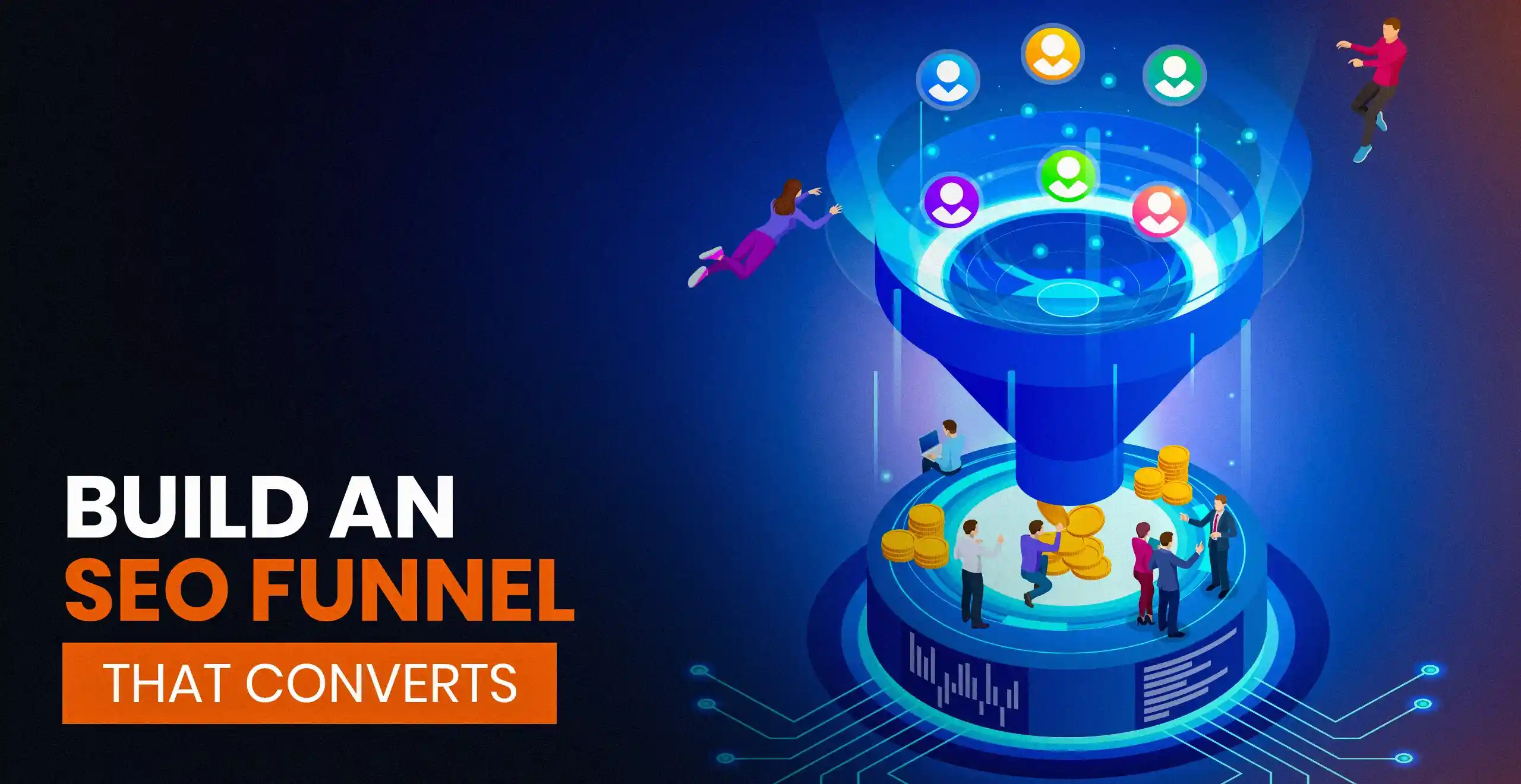How to Develop an Effective SEO Strategy Funnel for Long-term Success

Ever wonder why your tried-and-true SEO strategies aren’t driving the same results they used to? Search behaviors are getting more sophisticated, and businesses need to keep up. A generic approach just won’t cut it.
That’s where an SEO funnel comes in. When you use a structured, funnel-based model aligned with the customer journey, you don’t just chase rankings; you build an entire system to attract, nurture, and convert real prospects at every step.
What is the SEO Funnel? Why You Need a Funnel Approach to SEO
Let’s break it down: a funnel in SEO maps the route your visitors take, right from their first Google search about your brand, through the evaluation phase, down to the moment they finally become customers. The SEO funnel isn’t just theory, it’s your strategic roadmap to deliver tailored content and experiences that move people closer to conversion, step by step.
Why does this matter? Because user intent is everything. If you’re not matching the right content to the right stage of intent, whether someone’s looking for basic info, comparing solutions, or ready to buy, you’re leaving money and market share on the table. The funnel-based approach also syncs up beautifully with your bigger marketing and sales strategies.
Top to Bottom: Breaking Down the Stages of the SEO Funnel
| Stage | User Intent | Content & SEO Tactics | Primary Metrics |
| TOFU (Top) | Awareness | Informational blogs, guides, videos | Traffic Volume, Bounce Rate |
| MOFU (Middle) | Consideration | Comparison pages, listicles, case studies | Engagement, Dwell Time, Leads |
| BOFU (Bottom) | Conversion | Product pages, CTAs, structured data | CTR, Conversion Rate, Revenue |
Awareness Stage (Top of Funnel)
If you’re targeting users just beginning their search, think broad like “what is the SEO funnel” or “how does SEO work.” Here’s your chance to provide valuable blog posts, how-to guides, and snappy explainer videos. This gets you noticed and builds trust from the get-go.
- SEO Tactics: Go after high-volume, informational keywords.
- Formats: Articles, infographics, intro videos.
Consideration Stage (Middle of Funnel)
Now your audience is weighing their options. Maybe they’re reading in-depth blog comparisons, detailed case studies, or top ten lists. This is your space to shine as a thought leader and help people make smart decisions in your direction.
- SEO Tactics: Target long-tail and comparison queries like SEO tools comparison.
- Formats: Comparison tables, webinars, rich downloadable resources.
Conversion Stage (Bottom of Funnel)
At the bottom, your visitors have high intent; they’re looking for solutions like SEO audit pricing or hiring an SEO agency. You want highly optimized landing pages, glowing client testimonials, compelling calls-to-action, and all the right trust signals. Don’t forget structured data and CRO (conversion rate optimization) best practices.
- SEO Tactics: Focus on branded, transactional keywords.
- Formats: Conversion-focused pages, demos, video testimonials.
What Makes a Winning SEO Strategy Funnel in 2025?
To win at SEO in 2025, ensure your funnel evolves with both user behavior and ever-changing search algorithms. Aligning SEO goals to each funnel stage is key. Build your keyword funnel lists that reflect TOFU, MOFU, and BOFU intent, and keep an eye on where search trends are going.
Lean on tools like Google Trends and SEMrush to forecast demand spikes and spot new keyword opportunities.
Keywords Aren’t Enough: Build a Keyword Funnel That Works
A modern SEO funnel runs on mapping the right keywords to the right funnel stages.
- TOFU: Terms like “what is funnel in SEO” and “SEO basics guide” capture early interest.
- MOFU: Target “best SEO strategy funnel tools” or “SEO marketing funnel for SaaS.”
- BOFU: Go after “SEO services pricing” or “hire SEO agency” to grab users ready to act.
- Pro Tip: Use Google Search Console and SEMrush to spot performance gaps and new opportunities for every funnel stage.
Also Read: All You Need to Know About Top of Funnel Marketing
Optimize Your SEO Funnel with Insights from AdLift
Wondering how the pros do it? AdLift combines content at scale, technical optimization, and powerful analytics to maximize every stage of the SEO funnel. We’ve seen dramatic spikes in both traffic and revenue by using a full-funnel approach, precisely mapping content types, optimizing for both users and search engines, and tracking results religiously. That’s the kind of expertise you want in your corner.
SEO Marketing Funnel vs Traditional Sales Funnel: What’s the Difference?
While both funnels guide prospects from awareness to conversion, the SEO marketing funnel is inbound and content-driven, relying on organic search behavior and intent, whereas traditional sales funnels may use outbound or paid tactics.
| SEO Funnel | Sales Funnel | |
| Focus | User search intent and organic discovery | Lead generation and closing |
| Content Role | Central; content drives every stage | Supports nurture and closing |
| Time Horizon | Long-term, compounding ROI | Short-to-medium-term, direct action |
| Overlap | Both aim to convert leads; the sales funnel leans on SEO-qualified traffic at lower stages |
SEO funnels, by prioritizing authority and matching content to need, provide sustainable growth and brand development that outlasts transaction-focused tactics.
How to Plug Leaks in Your SEO Funnel and Convert More Users
Wondering why users drop off between stages? You’re not alone. Here’s what to try:
- Spot Drop-Offs: Use Google Analytics 4, heatmaps, and user flow analysis.
- Close Content Gaps: Guide every page visitor to the next step with clear calls-to-action and value explanations.
- Improve UX: Speed up your site, make it mobile-friendly, and simplify navigation.
- Test Everything: Experiment with A/B testing on CTAs, landing pages, and flows.
Customizing Your SEO Funnel for Different Niches
There’s no single formula your funnel must flex based on industry.
- SaaS: Create webinars, ultimate guides, and free demos targeting users at comparison and conversion stages.
- Ecommerce: Focus on product reviews, comparison shopping content, and rich schema.
- Local: Target geo-specific keywords, map packs, and local schema markup.
Match your content style and funnel depth to your target audience for best results.
Tools to Support Your Funnel SEO
Your SEO funnel deserves a tech stack that keeps you competitive:
- Keyword Research: SEMrush, Ahrefs, Google Keyword Planner.
- Monitoring: Google Analytics 4, Google Search Console.
- User Behavior: Hotjar, Crazy Egg.
- Custom Dashboards: Use GA4 to link organic outcomes directly to leads and sales.
Tracking Funnel Success: Metrics That Actually Matter
Measuring success demands discipline in tracking stage-specific KPIs:
| Funnel Stage | Key KPIs |
| TOFU | Organic traffic, impressions, bounce rate |
| MOFU | Dwell time, pages/session, engagement, lead form fills |
| BOFU | CTR, conversion rate, revenue, repeat purchases |
Use advanced metrics in GA4 Average Engagement Time, Engaged Sessions per User, Conversion Events, and Path Exploration to monitor and refine your funnel ecosystem.
Also Read: SEO Website Structure – The Ultimate Guide for Higher Rankings
Ready to Transform Your SEO Success? Start Building Your Funnel Now
The days of generic SEO are over. When you design your SEO funnel with care, mapping the right keywords, building intent-driven content, optimizing technically, and tracking performance fuels sustainable growth.
The result? You attract, nurture, and convert more high-quality leads. Agencies and brands that build agile, data-driven SEO funnels today will be the success stories everyone’s talking about in 2025. Partnering with an experienced SEO agency in India can help you get there faster.
